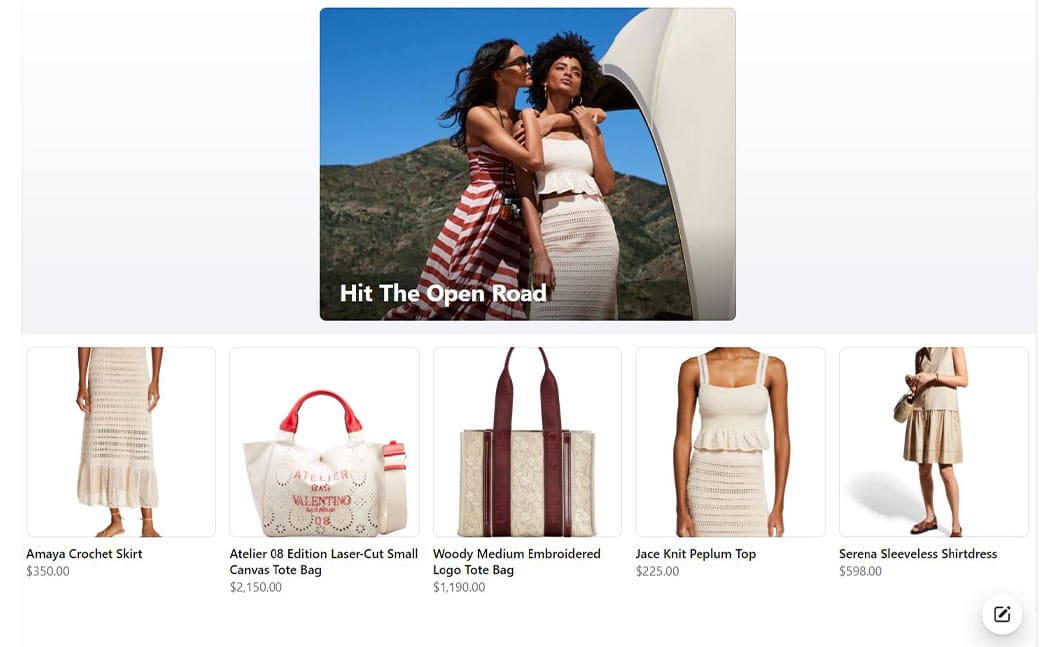Shoppers these days use multiple channels to discover a product, conduct research and make a purchase. So, an omnichannel retail strategy is key.
A typical customer journey may involve discovering a product through a PPC ad, finding in-depth product information on the website and visiting the brick-and-mortar store to buy it.
As a marketer, how do you meet shoppers’ needs when they utilize various platforms? The answer lies in building an omnichannel retail approach.
Understanding how an omnichannel approach works lets businesses deliver a consistent customer experience. Chances are, you’ll be able to reach shoppers at various touch points which increases the potential for conversion.
Here’s everything you need to know about omnichannel retail.
What Is Omnichannel Retail?
Omnichannel retail focuses on building a unified customer experience across touchpoints and channels. However, it doesn’t merely entail using multiple channels.
A holistic omnichannel approach looks at the entire customer experience as a whole. It doesn’t consider separate channels as individual retail experiences. As people use more platforms and devices, establishing an omnichannel retail strategy has become more crucial to success.
Nine out of 10 customers prefer omnichannel retail, according to research by software company NICE inContact. Plus, 72% of consumers expect businesses to understand their purchase history, regardless of the channel they use.
Take for instance a shopper who interacted with a chatbot and got redirected to a sales agent. Rather than explaining their dilemma again, agents are expected to know the details of their previous conversations.
Why Is Omnichannel Valuable for Retailers?
True omnichannel marketing offers a consistent experience across mediums. Aligning marketing and sales channels enables shoppers to utilize their preferred means of communication.
Here’s how an omnichannel experience might look for a travel agency:
- A customer discovers a destination she can visit through Instagram ads.
- Intrigued, she clicks the call-to-action button linked to the website. Then, she learns more about the travel packages, rates and experiences of past travelers.
- Shortly after, she clicks the downloadable guidebook of her preferred destination. This includes popular restaurants, top-rated attractions and unique destinations.
- She contacts the travel agent to get more in-depth information.
- Shortly after, she visits the agency to book a trip and submit the necessary documentation.
- In the future, she regularly receives offers about travel packages and discounts via email or social media.
Done right, omnichannel experiences motivate customers to keep interacting with your brand.
Neiman Marcus’ omnichannel marketing strategy makes use of various technologies and marketing platforms.
For starters, the department store chain posts its latest collection on Instagram and creates IGTV videos featuring trends, interviews and fashion shows.

Head to the chain’s Facebook Shop to find the cost and the link to the product page.

Some online shoppers may prefer getting feedback from sales associates. Yet, the brand has got this covered through an app that lets them contact staff via text, email or FaceTime. Also, they can receive personalized recommendations that take into account their size preferences.

The bottom line is this: Omnichannel is valuable for retailers because it allows them to keep communicating with shoppers in the channels they frequent. Whichever medium retailers choose, they have the means to move further down the funnel.
Omnichannel Advantages and Disadvantages
Benefit No. 1: Improves Customer Experience
Shoppers frequently use multiple channels to make purchasing decisions.
Six in 10 internet users begin the shopping experience on one device but continue or finish the customer journey on a different one, according to Google.
Because there’s a wealth of touch points for interaction, enabling smooth transitions from one channel to another is crucial to level up the sales process. Be it chatbot, sales agent, website, app or emails, interested shoppers want product information within their reach. That way, they can make informed decisions in a fast and convenient manner.
Benefit No. 2: Omnichannel Can Bolster Sales
Adopting an omnichannel retail strategy can have a significant impact on your profits.
Here are some statistics that prove this point:
- According to a study published in the Harvard Business Review, omnichannel shoppers “spend 4% more on every shopping occasion in the store and 10% more online than single-channel customers.”
- Some 62% of respondents who interacted with retailers through 10 or more channels had a habit of purchasing at least once a week, according to the study.
- Six months after the initial omnichannel experience, shoppers made 23% more repeat shopping trips, the study found. They were more likely to promote the brand via word-of-mouth to their network, than those who opted for a single channel.
Omnichannel shoppers are more likely to spend more and stay loyal in the long run. Having more patrons also will bolster the growth and profitability of your business.
Benefit No. 3: Deliver Personalized Experiences
Omnichannel retail lets marketers gather customer data across multiple channels.
Data is valuable when designing personalized experiences for shoppers. Think product recommendations, social media ads and emails based on your customers’ preferences and purchasing habits.
Personalization also will have an impact on your sales results, according to management consulting firm McKinsey & Co. It can drive between 5% to 15% revenue growth for companies in the entertainment, retail, travel, telecommunications and financial services sectors.
Disadvantage No. 1: Omnichannel Takes Time and Effort
Everything worth having takes time and the same is true for omnichannel marketing.
The main challenge is to ensure a consistent look, feel and customer experience across various channels. As such, marketers and designers must be well-coordinated for cohesiveness.
Even if people are aware of your campaign’s goal, interpretation and execution may differ. So, hold regular meetings to get everyone on the same page.
Disadvantage No. 2: Omnichannel Requires More Investment
An omnichannel strategy requires investment in the form of software and people power.
For greater personalization, you’ll need to spend on analytics tools that can aggregate customer information. More channels mean more content so you’ll need to invest more in content creators, markets and customer support to fulfill your content creation needs.
How to Create an Omnichannel Strategy
Utilizing an omnichannel path to purchase requires identifying the channels customers use. As with all investigations, this starts with understanding your shoppers’ needs.
1. Identify Customer Needs
Determine your target audiences’ demographics, preferences and needs.
Conduct actual research instead of assuming their profile. Host focus group discussions with your current customers to find out what they want and how you can improve. Ask customers to fill out surveys through Google Forms or Typeform to get feedback.
Social media accounts are a goldmine of data. Take advantage of social listening and analytics tools that can turn these interactions into valuable insights.
Conduct customer research regularly to get the information you need to launch and improve your omnichannel strategy.
2. Recognize the Right Channels
There are many channels where you can interact with customers.
Do some research and find out which ones customers use to interact with your brand. Besides launching a survey, look at the channels your competitors use to reach their target audience.
3. Determine the Objective of Each Channel
Each channel is meant to serve a distinct purpose. Figure out what information customers expect in each platform.
An interior design agency may use Instagram and Pinterest to share eye-catching photos of their latest renovations. Meanwhile, Facebook may be best for sharing links to blog posts and sharing events.
A good tip is to segment customers and identify the touch points across their buyer journey. Then determine the stages where cart abandonment may occur and how your sales and marketing team can keep them in the sales funnel. That way you can maximize the use of each channel and drive sales.
4. Unify Channels
Now that you know which channels to leverage, it’s time to connect them all together. You’ll need more tools to meet customer expectations and build a streamlined process.
Here are some examples of different tools that can unify your operations:
- Podium for live chat
- Odoo for inventory management
- Hootsuite for social media management and social media analytics
- Freshworks for customer relationship management (CRM)
- Freshdesk for customer support
Any tool can be added to your marketing stack. Just make sure you dedicate time to training your sales and marketing teams so they can utilize their full potential.
Also, there’s no need to get on multiple channels simultaneously. Start small by focusing on your main channels first such as a website or an app, then gradually increase the channels used in the buyer’s journey.
5. Analyze and Experiment
An omnichannel approach won’t be perfect at the beginning.
Instead, you must consistently monitor metrics and analyze results to determine the formula for success. Results also can guide future campaigns and uncover the most effective ways to modify your touch points.
Trends and preferences also change so analyze and experiment on new content formats on a quarterly or monthly basis.
6. Conduct Regular Meetings
Alignment is key to the success of your omnichannel approach.
Conduct regular meetings with your marketing and sales teams to guarantee a consistent experience across channels. If you’re launching multichannel campaigns, then make certain that designs and themes match your branding.
Note that customer-facing sales teams communicate with your audience every day. Hence, getting their insights would help you understand the latest concerns and inquiries holding customers back from making a purchase.
7. Improve Personalization
Implementing personalized experiences requires access to the right data and tools.
The good news is there are many tools in the market that can improve personalization.
Here are some worth considering:
- Apptus – An AI-powered tool that recommends the most relevant products to customers.
- Attraqt – an online visual merchandising tool that can use data to create real-time rich and personalized moments for customers.
- Optinmonster – Provides personalized offers and campaigns based on audience behavior to increase conversions.
- BrightInfo – Profiles audiences and utilizes data to present the most relevant content to visitors at the most suitable time.
These examples are only a few out of the many tools you can use to create personalized experiences for customers. As long as you have the right tools, you can leverage customer data and match visitors with the right content, recommendations and offers.
Leverage Omnichannel Commerce
Clearly, an omnichannel retail strategy lets you reach more customers and increase chances of conversion.
To start off, understand the needs of your shoppers. Identify the channels where they are more likely to interact. Map out the buyer’s journey and create a streamlined process by leveraging the right tools. As with any marketing initiative, you should analyze results and conduct regular meetings with your team to ensure alignment.
Interacting with customers at the right channel at the right time will be crucial to the success of your campaigns. So, get an omnichannel approach to improve your customer experience, improve retention and loyalty.











